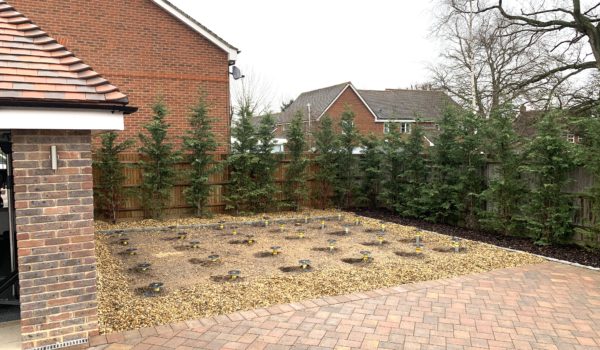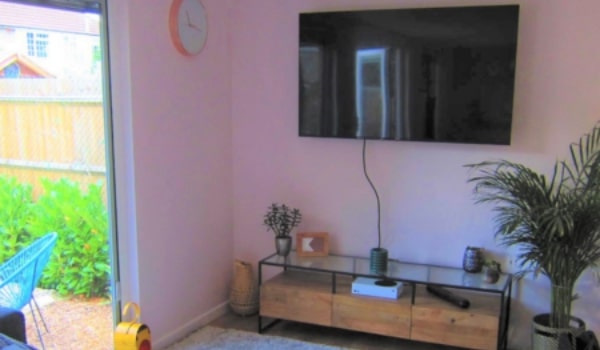We have provided a list of often-asked FAQs to help guide you through planning your Kingdom Garden Room.
General FAQs
Up to 2.5 meters high without planning permission is needed. Be mindful of garden heights though.
If further than 4 meters from a boundary, you can build higher.
Up to 30 square meters of floor area usually does not need permission. Up to half the area of a garden.
Whilst we may be able to build close to a boundary, our team will need space to work when they are creating your garden building. Then you need space to clean and remove any debris. We normally suggest 60cm. Any closer, you may need to remove and refit fence panels with neighbours’ consent.
If the building is solely or partially for business use, your Accountant can advise if and how much you can offset as a cost against earnings. Do not forget about any specific pathway, interior finishes and furniture too. Ask about Capital Gains Tax, as planning now may avoid an unexpected tax bill when you sell the property later.
Easy, visit this Government website for all the current rules. Also, give a very detailed and simple-to-understand explanation here.
Yes but as this is treated then as an extension to the house, planning restraints need to be considered.
If you want an occasional-use structure, then a lower-cost and lesser insulated building may suffice. If you plan to use it year-round, then invest in a building with good insulation and low-cost appliances as both will help recoup your investment. If noisy inside or need to be very quiet inside, then consider upgrading the acoustic insulation. We recommend a physical Cat 6 internet supply over less reliable WiFi.
Most buildings less than 2.5m high can be within 2 meters of a boundary without considering planning. As well as ‘kerb appeal’ of the front facade, consider the view out and how the sun can affect glare and heat ingress inside.
Consider the uses for the building and sketch out how you would set out and furniture inside. Planning could allow up half the area of your building but do not create something that negatively dominates a plot.
Be cautious about buying an off-the-shelf building. Whilst modular builds are often calculated to reduce waste and offer lower prices, a savvy provider can guide to the best value. Why not have windows and doors where you need them? Using 1.2 meter wide sections means a better value from a 4.8-meter wall than a 5m wall.
Some are. Look for timbers from sustainable sources, the best insulation in walls, windows and doors and general quality that will ensure the building lasts. Modern base systems such as ground screws and pads can help avoid the movement of many tonnes of waste moved from site and new materials arriving. More locally sourced materials and recycling of waste materials will help reduce your carbon footprint too.
https://www.pefc.co.uk/about-us/pefc-uk/
This is really easy. Simply a garden building suitable in size for both uses and an external door into each. Then build an internal wall and save money by not plastering the shed area. A neat and tidy way to solve two problems.
Non-treated and cheap timber structures with poor insulation sat directly upon non-insulated concrete can attract dampness that will start rot and reduce a building’s useful life to a few years. Quality insulated and ventilated structures can last as long as a brick-built house. As the Elizabethans, Georgians and Victorians, many of their good designs and quality timber-framed buildings still exist today.
Some structures with thinner walls, non-strengthened glass and simple locks will be more susceptible. Our windows and doors include interior glazing, heat-treated safety glass and insurance-approved locks as standard. We assume you could leave valuables in your building, so why not secure it as you would your home? Our frames are suitable to add contacts to connect to many existing house alarms, CCTV and security systems.
Living conditions FAQs
Convection electrical heaters create instant heat whilst underfloor and radiators are slower to heat up. Forget gas appliances as regulation changes will outdate these. Log burners look great and need to be professionally installed.
Electrics can be connected but your existing home consumer unit (fuse box) will need to meet current Building Regulations and be up to the task. Water and waste can be installed but this could require a pump due to distance and the need for Building Regulations for the structure.
Kingdom Rooms can construct to meet building Regulations for disability access with low thresholds, wide access and easy-reach sockets and switches. We can also assist with ramps, auto-activated doors and a bespoke design to site windows and doors around your planned room.
Just ask Alexa! Seriously we can offer an app or device-controlled lighting, heating and sockets for remote and safe access. Our sockets are future-proofed with both Type A & C USB charging points. CAT 6 is an optional wire that negates any unreliable WiFi for an internet connection. Our electrical options include LED lighting features alongside our standard low voltage spotlights internally and externally.
Air conditioning can be expensive, so the building design can help avoid the need. Solar rejecting glasses can help reduce heat ingress, as can the position of the building and any large windows or doors. Install a spare spur just in case as air conditioning could then be retrofitted if needed. Check out its efficiency and consider a unit that provides heat also as these can reduce initial cost and running costs.
We recommend ventilation. An occupied and sealed room can be harmful as you breathe in air and breath out an ever-increasing amount of harmful carbon dioxide. Being timber, allowing a structure to breathe will help expel harmful moisture too. Stud frame buildings with air voids should include an additional consideration to ventilate. Kingdom use trickle ventilation and partial opening secured windows along with vented voids and claddings.
Construction FAQs
If built within building regulations foundations could need to be substantial. Otherwise, a concrete base could be a low-cost option but beware of cold and damp transfer to a timber frame. Simple plastic grids may do for a shed but not for a larger building. We prefer ground screws or pads which distribute weight over a wide area whilst benefiting from a quick, clean and environmentally friendly base.
SIP or Structurally Insulated Panel buildings are tried and tested for house buildings and commercial structures. Factory fabricated and assembled on site, these fit snugly together with a historic ability to withstand the worst of British weather. Stud frame constructions are usually produced by a Carpenter by hand who arrives on site with a stock of timber (often untreated). Stud construction is normally used for non-supporting internal walls and can allow greater wall movement than a solid wall causing issues such as roof leaks and cracks between plasterboard joints internally.
Generally, pieces of 2″ x 4″ are placed vertically with occasional horizontal pieces to give some support to any plasterboard inside or wood panel outside. These are ideal for low-cost internal walls that carry no weight. Whilst sufficient for a shed, any flex or movement could cause issues with roof seals and any internal decoration.
As well as the cost of a building, budget for any furniture inside and then a path, patio or decking outside. You do not want to walk into a smart building with muddy shoes and creating a feature outside could help to frame and highlight your new building.
Most definitely and costs will vary too. Timbers for the base and structure should be treated to ensure the longevity of life. Breathable membranes can seal areas whilst air flow helps avoid moisture issues. A basic spruce softwood can be damp and if treated after installation will have no treatment benefit to its unseen rear. Heat and pressure-treated timbers such as Thermowood have a treatment drawn all the way through the timber (rather than a surface) with moisture removed and will last considerably longer. Premium timbers such as Oak and Redwood Cedar cost considerably more, creating beautiful facades. Why not use premium timber on the front and save money with a lower-cost product on the other sides? We prefer a stain that soaks into timber as opposed to a surface coating such as paint.
This differs considerably. A solid building capable of meeting Building regulations will be known to stand up to the test of strong winds and snow loading that our weather often brings. Lessor buildings may suffer from a movement that presents itself as cracks on internal corners and joints.
Considering that most garden buildings are timber, it makes sense to use a base that holds this away from cold, damp surfaces. Kingdom Rooms champion the use of Ground Screws and Easypad bases. As well as holding the structure off of a damp base, an air gap between affords greater insulation and helps keep the wood dry. Concrete bases are our last resort as concrete always gets cold and often damp too, two things that cause timber to rot from the base upwards.
Substantial concrete bases give great support for all that jumping and occasionally dropped weights but are not our preferred option due to damp transfer. Kingdom Rooms offer long and more ground screw locations for higher impact areas. These and our alternative pads are set across the whole floor area to provide a substantial base. We would recommend avoiding a rafter-type timber base with perimeter support.
Often yes. We offer an adapted pad system that allows us to do this but we need to ensure that the height then still remains within any 2.5m height restraint. Contractors will not guarantee any element of the build that they did not install such as an existing base, so ensure that you are happy that it is substantial and fit for purpose.
Finance FAQs
Now that’s a question with no simple answer. Simple being key. A low-cost building with less insulation and features will cost from £3000 but will not last as long as a high-quality building. Installation fees will vary depending on attention to detail and the type of base you require, as will internal and external finishing details. We offer one timber that costs twice as much as a cheap version and we have another that costs five times as much. With so many variations, we recommend that you budget between £1000 and £2000 per square meter of the base. Bi-fold doors, roof lights and interior fittings can push this higher.
Your own funds or an extension to a mortgage are the best value in funding a garden building. Low-cost loans are often available but check the terms as something as trivial as a late payment can cost you dearly. Speak to an Accountant as part or all of the cost may be tax deductible. And ensure that in doing so you do not leave yourself liable to any CG Tax when you sell your property. Also, consider any value this may add to your home and the cost of running this as an office instead of your whole house.
We recently had an enquiry from Grandad looking to build an annexe for his Granddaughter. She could stop renting, live rent-free and start saving for her first property. She lives nearby but with independence and she has a space that he could rent out tax-free when she moves on and his home value rises – win, win, win
https://www.dailymail.co.uk/property/article-8460995/A-garden-retreat-perfect-granny-flats-teens.html
They can add value and generally, a low-cost building could add some or no value, whilst a quality building can add up to 15% value to a home. That could even exceed your purchase price and create a profit. Estate Agents state that homeowners have sought quality additional space since the pandemic.
Firstly, opt for a quotation, these are a fixed price compared to an estimate which is estimated with a final bill that may vary. Then to ensure that you and your supplier are happy all the way through, insist on a thorough quotation, detailing what is and what is not included. Our quotation has 7 pages of information. There’s lots to read but it has avoided disappointment and led to items being clarified before we even.
Honourable suppliers will price competitively but there could be areas where you can reduce a price. The specification could include differing internal and external finishes which when you change may reduce the price. Ask about a flexible installation. As materials, staff and weather can affect a build program, having a flexible customer who may allow a build to start early, late or over a longer period has a value to a supplier that may be reflected in a discount.
Insulation FAQs
We offer a dried and treated Thermowood for extended life along with a premium Redwood Cedar (which looks great with two coats of Danish oil). Composite and recyclable plastic claddings also provide a beautiful finish with wipe-clean maintenance. We avoid low-cost options such as Spruce which have lesser life-enhancing treatments, and higher moisture and sap content as stains and paints are more likely to need regular maintenance.
Thin solid wood walls give little sound insulation, whilst using thicker, well-insulated walls with additional battened plasterboard will increase acoustic insulation further. We can guide you on Kingdom Glass which will inexpensively increase noise insulation above standard double glazing and advice on sound-blocking wall and floor coverings.
Basic structures have an external wall only. Foam and Rockwool types of insulation can then be applied internally in differing thicknesses with a thin MDF or thicker plasterboard covering. Thicker plasterboard, batons behind and even a plaster coating will enhance insulation further. A U value gives you the best indicator of insulation achieved.
You have seen these already set out on an energy label. Generally the lower the U value the better the insulation. Some summerhouses and garden rooms being single glazed are approx 5.6, whilst normal double glazing is 2.9 and our A+ Rated windows are 1.1. Our walls are 0.27 as standard and can be made even lower to comply with the most stringent Building Regulations.
Reducing your heating costs at a time of rising energy bills is a key motivator. Another is ‘The Cold Spot’. If you have ever stood near a large poorly insulated window on a bitterly cold day, you would have felt the cold ingress as heat exits. Reducing heat loss will create a more comfortable environment year round and move that cold spot considerably closer to large windows or doors (as close as 5cm away).
Design/Style FAQs
L and U shapes are quite easy to produce, as is a triangle-type shape to utilise that otherwise wasted area of the garden.
Our Kingdom Glass uses UV stabilising glass which reduces harmful UV rays by up to 95%. These are the rays that cause fading.
We build openings to be suitable for blinds and curtains. As dust can be more prevalent in gardens, our internal blinds prove very popular. Magnetically controlled, these are set between the glass, with no need to clean. Internal blinds can be seen at our show site (along with a working set now 25 years old.
You can but we do advise that structural support be installed directly over the top of your doors. Without it structures such as stud frame buildings could see the roof sag and cause issues with the opening and closing of doors.
No, not if properly designed. Roof lights can be expensive, prone to leaks on low-pitched roofs and create a no-go ‘Glare Area’ below. You can normally avoid this with plenty of good-sized windows and doors.
Certainly not fel! Modern materials such as EPDM (rubber) and fibreglass will cost you more but are designed to last considerably longer. These are ideal for low-sloping roofs whilst slates and tiles can be used for roofs with a greater pitch.
Planning permissions/regulations FAQs
Yes, we can guide you as to when regulations apply and then help you through the process.
Generally, you will need to construct to Building Regulations if this is a habitable structure with water in and waste out. Planning permission may also apply.
We recommend using our approved agent to guide you through the process of planning as he will be able to guide you through and possibly away from expensive pitfalls. The actual application cost is inexpensive and our agent will be able to advise you on costs before you start the process.
If not a habitable building, usually the only regulation to follow will be Part P for Electrical Safety. Kingdom Rooms feel this omission leaves many structures susceptible to becoming outdated or poorly performing. We use safety glass throughout (even the small windows), as the garden can be a barefoot risk area. We use energy-saving A+ Rated windows and doors to compliment our incredibly insulating walls, floor and roof.
Generally no, if it is not lived in, is below 2.5m high and has no water supply or waste.
There could be some exceptions and we are here to assist with further guidance here: https://www.kingdomrooms.com/legal-notice. We take our guidance for the Government Building Portal here: https://www.planningportal.co.uk/info/200130/common_projects/43/outbuildings
Your local Tree Protection Order Local Authority Officer can give specific advice. But generally, our ground screws base option is the most preferred. They can avoid the damage to roots caused by strip or slab concrete bases.
Insurance FAQs
Generally no, as many are ‘ad hoc’ structures built on-site or the company may be considered too high a risk to offer insurance through. More quality building suppliers are now offering IBGs as they gain the trust of insurers. We offer a Consumer Protection Association guarantee as standard on all domestic installed buildings and with cover varying, suggest you check out the cover being offered first.
We recommend that you inform your insurance company to ensure that your investment and any contents are covered.
Can’t find the help you are looking for? Please contact us with any questions you have.








